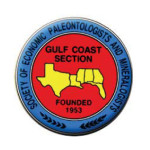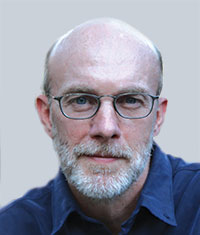
Model the Rock! Using Diagenesis Simulation for Rock Property Prediction
Speaker: Rob H. Lander, Geocosm
 Tuesday, September 22, 2015
Tuesday, September 22, 2015
11:45 am – 12:50 pm
George R. Brown CC, 360CF
Cost: $50
We have an unprecedented ability to realistically depict the spatial distributions of lithofacies in the subsurface thanks to developments in sequence stratigraphy, sedimentology, structural geology, geostatistics, and geophysics. As important as these developments have been, however, they in themselves have a limited ability to accurately predict rock properties–particularly in regions with high thermal exposures and restricted well control. This limitation arises because the geomechanical, petrophysical, and fluid-flow properties of clastic rocks are strongly affected by diagenetic processes (i.e., biological, physical, and chemical processes that occur after burial). For instance, the mechanical nature of a sand deposit may change with diagenetic alteration from a quasi-liquid (think quicksand) to a rigid material suitable for building gothic cathedrals. Likewise, permeability may decline by as much six orders of magnitude as the sediment compacts and is subject to geochemical alteration.
Recent breakthroughs in sedimentary petrology have led to improved understanding of compaction and quartz cementation in sandstones. Our group has built process models that build on these advances and developed additional models for grain-coating chlorite formation from volcanic rock fragment alteration, illite formation from the reaction of kaolinite and K-feldspar, and mechanical compaction, among others. Additionally, we use an a posteriori procedure that relies on analog sandstones to consider the effects of diagenetic processes for which accurate process models have yet to be developed. We combine these diagenetic models to predict the composition, texture, and porosity of sandstones through geologic time given the depositional composition and texture of a sand and its burial history. These results, in turn, serve as input for models that predict permeability and seismic velocities.
Accurate subsurface rock property models can be developed when this diagenetic modeling system is integrated with methods that describe the spatial distributions and depositional characteristics of lithofacies and petroleum system models that reconstruct sediment thermal and stress histories. This integrated approach has proven to be useful for reservoir quality risk assessment in a broad range of geologic settings, including some with considerable complexity. For instance, it has been used for accurate pre-drill prediction of reservoir quality in regions affected by thermal anomalies associated with salt structures.
To take this methodology a step farther and to better constrain rock physics, geomechanics, and fluid-flow properties of rocks in undrilled areas, we are developing a next-generation modeling platform that rigorously simulates processes in 3D at the grain scale. This 3D approach has the potential to provide unique predictive models of pore network geometries and grain contact properties for rocks in undrilled areas. The system considers thousands of grains with realistic shape and size variations and simulates deposition and rearrangement with Newtonian physics and brittle and ductile deformation of solid components with continuum mechanics. It also considers geochemical processes including quartz cementation and contact dissolution (“pressure solution”).
Robert Lander
Haas-Pratt Distinguished Lecturer
Rob Lander’s primary interest is in understanding the controls on diagenetic processes in clastic rocks and using this understanding to develop accurate models of rock properties away from well control and through geologic time. He is the inventor or co-inventor of several simulation systems for diagenesis and reservoir quality prediction including Touchstone©, T>Map©, T>Earth©, Prism2D©, Exemplar©, and Cyberstone©.
Rob co-founded Geocosm LLC and co-directs the company’s Consortium for the Quantitative Prediction of Sandstone Reservoir Quality (RQC), which was established in 2001 and currently has 23 members. He also is a Research Fellow with the Bureau of Economic Geology and collaborates with the Fracture Research and Applications Consortium at The University of Texas at Austin. Rob established Geocosm in 2000 after a stint as Technical Director of Geologica AS in Stavanger, Norway. Prior to his time in Norway he was a Senior Research Geologist at Exxon Production Research in Houston, Texas.
Rob has published a number of papers on topics involving diagenesis and reservoir quality prediction (including several Notable Papers in the AAPG Bulletin) and received the Wallace E. Pratt Memorial Award for best paper published in the AAPG Bulletin in 2010. He has a Ph.D. in Geology from the University of Illinois at Urbana-Champaign and a B.A. in Geology from Knox College.